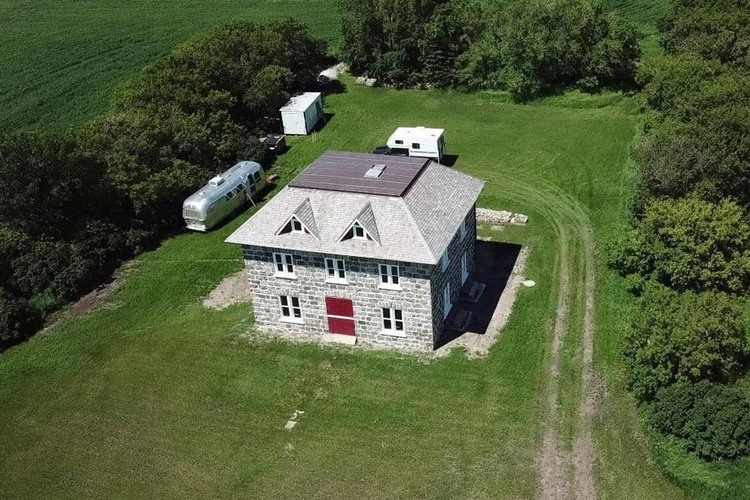Mar 26, 2024 Throughout March the Heritage Conservation Branch of the Ministry of Culture, Heritage and Sport held the 2024 Heritage Conservation Branch Winter Webinar Series: Historic Places - Living Places, a series of three webinars discussing heritage places in Saskatchewan. They were attended by people from across Saskatchewan and Canada. I was able to attend all three webinars, and commend the work of the Heritage Conservation Branch for their work in highlighting some excellent heritage projects across the province. On March 5 we heard from Heath Duncan about the Vibank Heritage Centre in the Village of Vibank and Royce Pettyjohn about the C.M. Glascock Building in Maple Creek. On March 7 we heard from Melody Wood about Buffalo Child Stone, its past and its relocation to the Saskatchewan Indigenous Cultural Centre. On March 12 we heard from Jesse Crozier of S.L. Contractors about the rehabilitation of the Canada Post building in North Battleford and Curtis Lax with other colleagues from the Nicor Group about the General Motors Building in Regina. On the first day we heard from Vibank and Maple Creek. Both have buildings with unique problems only found in heritage sites, but also special places for community building. This is not without struggles post-pandemic, but as Heath Duncan said about the Vibank Heritage Centre, “once it’s gone it’s gone” - heritage places are finite and their potential for adding to and growing community vibrancy can disappear. On top of that, a space needs to be used, both because that keeps it in the forefront of the community’s mind, and using a building is the best way to maintain it. On the second day we heard about Buffalo Child Stone. Two important notes came out of that presentation and discussion. One is a reminder that heritage places are for people. Buffalo Child Stone is valued not because it was destroyed, not because of its physical nature, but because it’s a part of a vibrant culture and represents the existence of that culture over a long period of time. The discussion highlighted that reconciliation work takes time. It isn’t something that’s quick and easy, and it has to be worked on - relationships have to be built, meetings scheduled, and in this case site visits planned around weather and busy schedules. The project highlighted in this webinar took five years from the point that elders asked for it, to the time it was celebrated. Time isn’t a bad thing however. Meaningful changes take time, and that time can help build relationships and strengthen the changes in the long run. Both presentations on the third day were excellent demonstrations of adaptive reuse. What we learned built on other days and reinforced a few of the themes that came out of this year's webinars. Chiefly that time is something required to do the work well. Heritage work isn’t quick - we shouldn’t deceive ourselves and think it can be done easily. The end results are worth it. In Battleford the revitalization of the old post office brought the downtown back. When Canada Post left North Battleford, Crozier from S.L. Contractors, who now own the building, said the downtown was “hollowed out.” Revitalized buildings are interesting too. Prospective tenants value the heritage character - the General Motors Building in Regina acquired tenants only after they were able to see the restored character features of the building. What did we learn then? First off, there’s some really good heritage work going on in Saskatchewan! These yearly webinars give a venue to talk about the good work, and the problems the community is facing. Heritage places also have more value than the building itself. In Maple Creek and Vibank the buildings are about the people more than the bricks and mortar. The building exists as a place for gathering and connection, both to the current members of the community as well as to the past. The same can be said of North Battleford and Regina, but this phenomenon is most noticeable at Buffalo Child Stone. Wood talked about how the stone, complete and in its original location, was a gathering place for thousands of people. Finally, and something we can contribute from Heritage Saskatchewan as well - we need to communicate within the heritage community better. Do you know who to call for masonry repairs or roofing issues? Do you know if other people have dealt with similar problems in Saskatchewan? There are networks that exist, like the Canadian Association of Heritage Professionals, and those networks can be useful, but sometimes difficult for the public to connect to. A step towards this could involve communities of practice for heritage place typologies, more frequent meetings with both owners and practitioners, or even something else entirely! Thanks to the speakers at this year's webinar series. Those of us who attended learned a lot about heritage conservation in the province, and provoked a lot of questions and ideas. What did you think about the series and places invovled? We'd love to hear from the heritage community across the province. Discussing Heritage: the 2024 Heritage Conservation Branch Winter Webinar Series, Historic Places - Living Places

